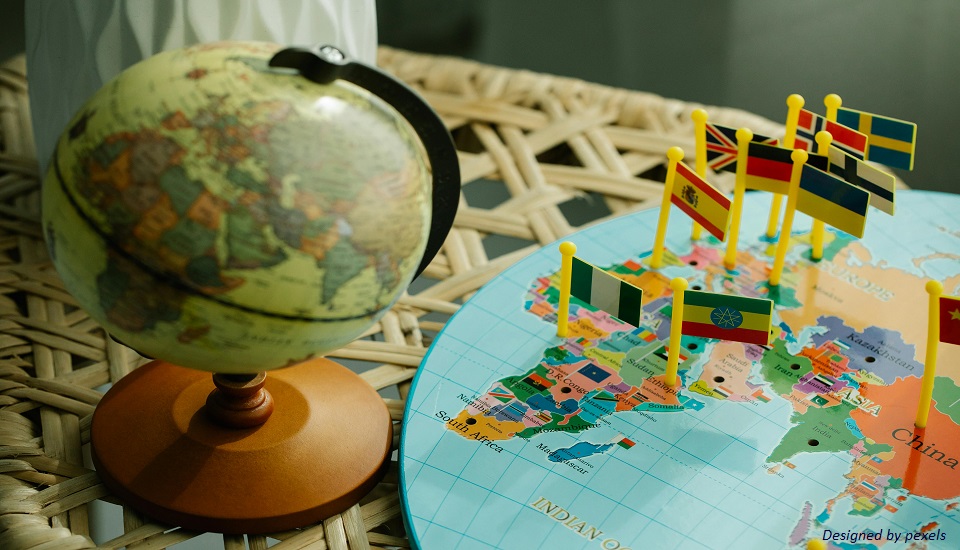5 Practical Yet Simple Ways to Improve Knowledge About Other Countries in Young Learners
21st April 2025

As a teacher trained in pre and primary teacher training courses, preparing lesson plans is a part of your daily life. And you love every part of the planning sessions because you are a passionate teacher. You are dedicated to making learning exciting yet educational for young minds.
And if you are in the teaching stage wanting to increase the knowledge of other countries in your young students, you have landed on the right blog. One question that might come up in your mind is: how can these young learners learn about the amazing world outside? Keep on reading and you will find out.
Why Global Awareness Matters in Pre and Primary Classrooms?
Global awareness is not just about pointing to countries on a map. It is about helping kids care about different people, traditions, and ways of thinking. Agree?
When children understand the world, they become more caring, curious, and open-minded- developing critical thinking- exactly what you want to see in your classroom! Research reveals that children who learn about many cultures become better team players and develop more empathy. So, the earlier you know ways to teach kids about global cultures, the better!
5 Simple Ways to Expand Children’s Knowledge of Different Countries
Now, let's explore the practical ways that can help you bring this global perspective to life in your classroom:
1. Fill Up Those Shelves with Books from Around the World
Books can take your learners to places they have never been! When you add stories from different countries to your classroom, they see life through new eyes.
Why this approach helps:
- Books like 'The Name Jar' or 'Children Just Like Me' get your learners wondering about other ways of life.
- They will become curious and ask questions like 'What do kids eat for breakfast in Japan?'
- It is super easy. Just switch in some global stories in between your regular reading time.
Try to pick a different country each month and read books from that place. Your learners will look forward to traveling somewhere new!
2. Celebrate Various Holidays, Foods, and Traditions
Every country has its special days and delicious foods. Use these fun things to teach about different cultures! From Diwali in India to Lunar New Year in China, these celebrations make learning feel like a party.
How it works:
- Host international food days where kids can taste new flavors. What if they might love trying new things?
- Get crafty with activities like making paper lanterns or traditional decorations.
- Let the learners pick which celebrations interest them most- they will be more excited to learn.
How about creating a 'Share Your Tradition Day' where students can talk about special celebrations in their own families? You will see the classroom buzzing with beautiful and surprising discoveries!
3. Make Maps and Technology Your Best Friends
Do you want to see your learners' eyes light up? Pull out a globe or open Google Earth! There is something magical about seeing where countries are located in which part of the world.
How this benefits the learning experience:
- When students find countries on a map, they suddenly understand how the world fits together.
- Digital tools let your class travel without leaving the room. You can check out famous landmarks with just a click.
- Hands-on map activities stick in kids' memories better than any worksheet.
You can try this: start a 'Where in the World?' every week when your students get to explore a new country. Mark it on your classroom map and watch a quick video about life there. Your students will be geographical experts before you know it!
4. Bring Real People with Real Stories into Your Classroom
Nothing beats hearing from someone belonging to another country who deeply knows about their culture, heritage, specialties, and exciting facts. Whether in person or through video calls, guest speakers make learning come alive in unique ways.
How this helps:
- Real stories from real people make other countries feel less far away.
- Students can ask questions they are actually curious about.
- Your class gets to hear different accents, see traditional clothing, or learn authentic phrases.
You can connect with local colleges, cultural centers, or even parents in your school community. Guess what? Many people love sharing their heritage with curious kids.
5. Make a Fun Wall Display About Countries
It is time to change that empty wall into a colorful celebration of countries around the world! A 'Culture Spotlight Wall' let’s students share mind-blowing discoveries and learn from each other.
Why you should do this:
- Young kids love researching countries they are curious about and sharing what they find.
- The wall becomes a conversation starter filled with photos, facts, and student artwork.
- Students feel proud when they become the expert in their chosen country.
Moreover, you can try changing your featured countries each month and let students add new facts whenever they discover something interesting. Very soon, your wall will become the most popular spot in the classroom!
Bottom Line
Educators who graduated with a diploma in pre primary teacher training understand that helping kids be aware of different cultures is very important, especially in today's interconnected world. When you build curiosity, empathy, and understanding in young minds, you are helping them develop the skills they need to navigate the global community with confidence. So, which idea will you try first? The world is waiting to be explored in your classroom.
Written By : Varsha











